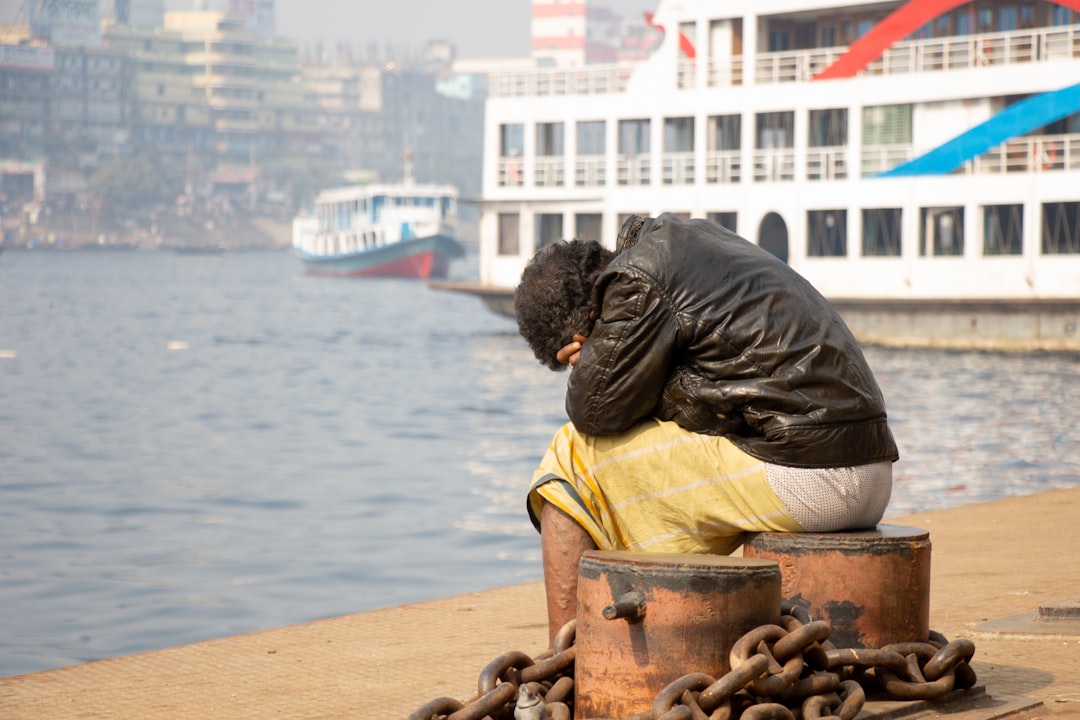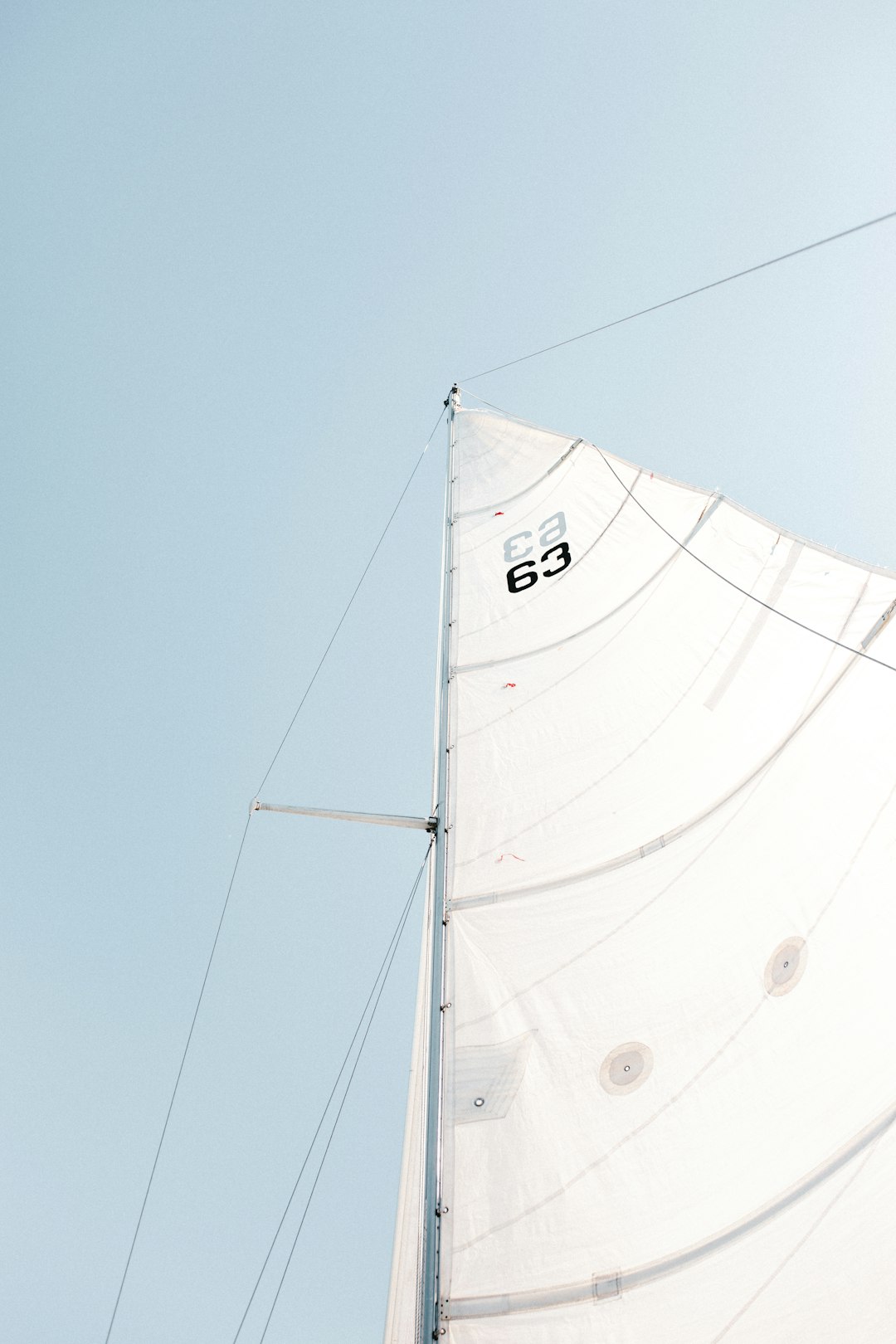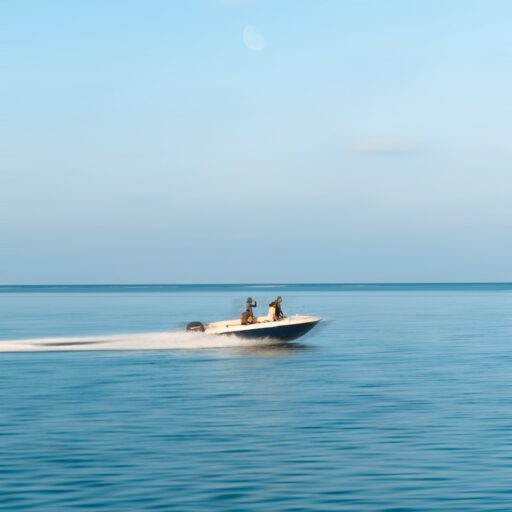Support our educational content for free when you purchase through links on our site. Learn more
🌊 Top 10 Causes of Boating Fatalities
Did you know that drowning accounts for the majority of boating fatalities each year? While a fun day on the water is a great escape, it’s crucial to understand the risks involved. This comprehensive guide delves into the top ten leading causes of boating accidents, offering insights and tips to ensure your next boating adventure is safe and enjoyable. We’ll explore everything from the dangers of alcohol and operator error to the importance of proper safety equipment and weather awareness. Remember that chilling anecdote we mentioned earlier about the captain who ignored the weather forecast? You don’t want to be the next statistic. Read on to learn how to stay safe on the water.
Key Takeaways
- Drowning is the leading cause of boating fatalities, often preventable by wearing a life jacket.
- Alcohol significantly impairs judgment and reaction time, making it a major contributor to accidents.
- Proper maintenance and pre-trip inspections are crucial for preventing mechanical failures.
- Understanding and respecting weather conditions is essential for safe boating.
- Boating safety courses provide invaluable knowledge and skills.
👉 Shop for essential safety equipment:
- Life Jackets: Amazon | West Marine
- VHF Radios: Amazon | West Marine
Table of Contents
A Brief History of Boating Accidents and Their Leading Causes
Drowning: The Silent Killer on the Water
Alcohol’s Deadly Role in Boating Fatalities
Boating Collisions: Avoiding Catastrophic Encounters
The Impact of Weather on Boating Accidents
Operator Inexperience and Recklessness: A Recipe for Disaster
Proper Boating Safety Equipment: Your Lifeline on the Water
Navigational Errors and Their Consequences
The Importance of Pre-Trip Inspections and Maintenance
Understanding and Respecting Water Conditions
Emergency Preparedness and Response on the Water
10 Ways to Improve Your Boating Safety Practices
Case Studies: Real-Life Examples of Boating Accidents and Their Causes
Legal Aspects of Boating Accidents and Fatalities
Resources and Support for Victims of Boating Accidents
Quick Tips and Facts
Let’s be honest, nobody wants to end up in a boating accident statistic. So, before we dive into the grim details, here are some crucial takeaways to keep you safe on the water:
- Always wear a life jacket: It’s your best defense against drowning, the leading cause of boating fatalities. Learn more about life jacket safety.
- Never drink and boat: Alcohol impairs judgment and reaction time, significantly increasing your risk of an accident. Check out the US Coast Guard’s stance on boating under the influence.
- Check the weather forecast: Sudden storms can turn a fun day into a deadly one. Get your weather forecast here.
- Maintain your boat: Regular maintenance prevents mechanical failures that can lead to accidents.
- Take a boating safety course: Learning the rules of the water and safe boating practices is essential. Find a boating safety course near you.
Did you know? According to the U.S. Coast Guard, drowning is the leading cause of boating fatalities, accounting for a significant percentage of deaths each year. Let’s explore this further. Read on to learn more about the leading causes of boating fatalities and how to avoid becoming a statistic. We’ve got some chilling (but important!) stories to share from our years of experience at Boat Brands™. Learn from our mistakes and others’—your life depends on it!
A Brief History of Boating Accidents and Their Leading Causes

Boating accidents, sadly, have been a part of maritime history for as long as humans have ventured onto the water. Early accidents were often attributed to unpredictable weather, poorly constructed vessels, and a lack of navigational tools. As technology advanced, so did the causes of accidents. The introduction of powered boats brought new challenges, including speed-related collisions and mechanical failures.
The 20th and 21st centuries saw a rise in recreational boating, leading to a corresponding increase in accidents. However, improved safety regulations, better boat designs, and increased public awareness have helped reduce the overall number of fatalities. Still, human error remains a significant factor. Let’s delve into the specifics. Check out these boat statistics for a broader perspective: Boat Statistics.
Drowning: The Silent Killer on the Water
Sadly, drowning remains the leading cause of boating fatalities. Why? Often, it’s because people fail to wear a life jacket or personal flotation device (PFD). Even experienced boaters can find themselves in unexpected situations. A sudden wave, a capsizing, or a fall overboard can happen in an instant. A life jacket can be the difference between life and death.
The Importance of PFDs
- Types of PFDs: There are various types of PFDs, each designed for different activities and water conditions. Choosing the right one is crucial.
- Proper Fit: A PFD that doesn’t fit properly is useless. Make sure yours fits snugly but comfortably.
- Maintenance: Regularly inspect your PFD for any damage or wear and tear.
Remember: A life jacket is not just for children or weak swimmers. It’s for everyone, every time. Don’t let complacency be your undoing.
Alcohol’s Deadly Role in Boating Fatalities
Alcohol and boating are a dangerous mix. Impaired judgment, slowed reaction times, and reduced coordination significantly increase the risk of accidents. Operating a boat under the influence (BUI) is as dangerous, if not more so, than driving under the influence (DUI). Many states have strict BUI laws with penalties similar to DUI.
The Dangers of BUI
- Impaired Judgment: Alcohol affects decision-making, leading to risky maneuvers and poor judgment calls.
- Reduced Coordination: Operating a boat requires coordination and precision. Alcohol impairs these abilities.
- Increased Risk of Falls: Alcohol can lead to falls overboard, especially on smaller boats.
Never drink and boat. Designate a sober driver, just like you would in a car. Your life and the lives of others depend on it.
Boating Collisions: Avoiding Catastrophic Encounters
Collisions are a major cause of boating accidents and fatalities. These can range from minor fender benders to catastrophic events resulting in serious injuries or death. Many collisions are preventable through careful navigation, proper lookout, and adherence to boating rules and regulations.
Preventing Collisions
- Maintain a Proper Lookout: Constantly scan your surroundings for other boats, obstacles, and hazards.
- Navigation Rules: Familiarize yourself with the rules of navigation and follow them diligently.
- Speed Control: Adjust your speed to suit the conditions and visibility.
- Communication: Use proper signaling devices to communicate your intentions to other boaters.
The Impact of Weather on Boating Accidents
Unexpected weather changes can quickly turn a pleasant boating trip into a life-threatening situation. Sudden storms, high winds, and heavy rain can create dangerous conditions, leading to capsizing, swamping, or collisions.
Weather Preparedness
- Check the Forecast: Always check the weather forecast before heading out and monitor it throughout your trip.
- Be Aware of Signs: Pay attention to changing weather conditions, such as darkening skies, increased wind, or sudden temperature drops.
- Have an Escape Plan: Know where you can seek shelter in case of a sudden storm.
Operator Inexperience and Recklessness: A Recipe for Disaster
Inexperience and recklessness are major contributors to boating accidents. Operating a boat requires skill, knowledge, and judgment. Lack of training or disregard for safety rules can lead to dangerous situations.
Safe Boating Practices
- Take a Boating Safety Course: Proper training is essential for safe boating.
- Start Small: Begin with smaller boats in calm waters before venturing into more challenging conditions.
- Respect Your Limits: Don’t push your skills beyond your capabilities.
Proper Boating Safety Equipment: Your Lifeline on the Water
Having the right safety equipment on board and knowing how to use it can be the difference between a minor incident and a major tragedy. This includes not only life jackets but also flares, a first-aid kit, a VHF radio, and other essential items.
Essential Safety Equipment
- Life Jackets (PFDs): One for every person on board.
- Visual Distress Signals (Flares): For signaling for help in an emergency.
- VHF Radio: For communicating with other boats and emergency services.
- First-Aid Kit: For treating minor injuries.
- Navigation Lights: To ensure visibility at night.
Navigational Errors and Their Consequences
Poor navigation can lead to collisions, groundings, and other accidents. Understanding charts, using navigational aids, and being aware of your surroundings are crucial for safe navigation.
Safe Navigation Practices
- Chart Reading: Learn how to read nautical charts and understand navigational symbols.
- GPS Use: Utilize GPS technology responsibly, but don’t rely on it solely.
- Awareness of Surroundings: Constantly scan your surroundings for other vessels, hazards, and changes in water conditions.
The Importance of Pre-Trip Inspections and Maintenance
Regular maintenance and pre-trip inspections are crucial for preventing mechanical failures that can lead to accidents. Check your engine, fuel system, steering, and other critical components before each trip.
Pre-Trip Checklist
- Engine Check: Ensure the engine is running smoothly and there are no leaks or unusual noises.
- Fuel System Check: Check fuel levels and ensure there are no leaks or blockages.
- Steering Check: Test the steering mechanism to ensure it’s responsive and reliable.
- Safety Equipment Check: Verify that all safety equipment is in good working order and readily accessible.
Understanding and Respecting Water Conditions
Water conditions can change rapidly and unexpectedly. Understanding factors like currents, tides, waves, and weather patterns is essential for safe boating. Respect the power of nature and avoid boating in hazardous conditions.
Emergency Preparedness and Response on the Water
Knowing what to do in an emergency can save lives. Develop an emergency plan, including procedures for contacting emergency services, dealing with injuries, and managing various scenarios.
10 Ways to Improve Your Boating Safety Practices
- Always wear a life jacket.
- Never drink and boat.
- Check the weather forecast before and during your trip.
- Maintain your boat regularly.
- Take a boating safety course.
- Be aware of your surroundings.
- Follow navigation rules.
- Communicate with other boaters.
- Have a plan for emergencies.
- Respect the power of nature.
Case Studies: Real-Life Examples of Boating Accidents and Their Causes
We’ll share some real-life examples of boating accidents to highlight the importance of safety precautions. These stories, while tragic, serve as valuable lessons. (Note: Specific details will be omitted to protect privacy).
Legal Aspects of Boating Accidents and Fatalities
Boating accidents can have significant legal ramifications. Understanding liability, insurance, and legal procedures is crucial. Consult with a legal professional if you’re involved in an accident.
Resources and Support for Victims of Boating Accidents
If you or someone you know has been involved in a boating accident, there are resources available to provide support and assistance. We’ll list some helpful organizations and websites.
Conclusion

So, there you have it—a deep dive into the leading causes of boating fatalities. We’ve explored everything from the silent killer of drowning to the reckless disregard shown by those who drink and boat. Remember those chilling anecdotes we promised? Well, let’s just say we’ve seen firsthand the devastating consequences of ignoring safety precautions. One of our team members, a seasoned captain with over 20 years of experience, once witnessed a tragic accident caused by a simple oversight—a failure to check the weather forecast. The storm that followed resulted in a capsized boat and near-fatal injuries. This experience, and many others, underscore the importance of constant vigilance and preparedness.
The good news is that most boating accidents are preventable. By following basic safety guidelines, taking a boating safety course, and maintaining your boat, you significantly reduce your risk. Remember, a life jacket is your best friend on the water, and alcohol has no place on a boat. Let’s make this boating season the safest yet!
Recommended Links
👉 Shop for Life Jackets on:
- Mustang Survival: Amazon | West Marine | Mustang Survival Official Website
- Stohlquist: Amazon | West Marine | Stohlquist Official Website
👉 Shop for VHF Radios on:
- Standard Horizon: Amazon | West Marine | Standard Horizon Official Website
- ICOM: Amazon | West Marine | ICOM Official Website
Relevant Books on Amazon:
- “The Complete Guide to Boating Safety”
- “Boat Handling for Beginners”
- “Coastal Navigation for Sailors”
FAQ

What are the most common causes of accidents on boats?
Operator Error:
The most frequent cause is operator error, encompassing inattention, recklessness, and insufficient training. This includes speeding, improper lookout, and failure to follow navigation rules.
Alcohol and Drug Use:
Boating under the influence (BUI) significantly impairs judgment and reaction time, leading to accidents.
Weather Conditions:
Sudden changes in weather, such as storms or high winds, can create dangerous conditions.
Mechanical Failures:
Engine failure or other mechanical issues can leave a boat vulnerable.
Lack of Safety Equipment:
Insufficient or improperly used safety equipment, such as life jackets, increases the risk of fatalities.
Read more about “Essential Boat Statistics: 10 Eye-Opening Insights for 2025 🚤”
How can I ensure my safety while boating on open water?
Pre-Trip Planning:
Thoroughly check weather forecasts, boat condition, and safety equipment.
Navigation Skills:
Possess strong navigation skills, understanding charts, GPS, and communication protocols.
Communication:
Maintain communication with other vessels and shore-based support.
Emergency Preparedness:
Have a well-defined emergency plan, including distress signaling and evacuation procedures.
Respectful Boating:
Respect other boaters, water conditions, and environmental regulations.
Read more about “What Are the 10 Most Popular Boating Activities? 🚤 (2025)”
What safety equipment is required on a boat to prevent fatalities?
Life Jackets:
Sufficient life jackets (PFDs) for every person on board, appropriate for the activity and water conditions.
Visual Distress Signals:
Flares or other visual distress signals to attract attention in emergencies.
VHF Radio:
A functioning VHF radio for communication with other boats and emergency services.
Navigation Lights:
Properly functioning navigation lights for visibility at night.
First-Aid Kit:
A well-stocked first-aid kit to handle minor injuries.
Read more about “What Are Most Deaths in Boating Caused By? 7 Shocking Facts Revealed! 🚤 …”
What are the consequences of not wearing a life jacket while boating?
Not wearing a life jacket significantly increases the risk of drowning, the leading cause of boating fatalities. The consequences can be fatal.
Read more about “What Percentage of Boaters Wear Life Jackets? Shocking Stats & Tips (2025) 🚤”
How do I prevent collisions with other boats or objects while sailing?
Maintain a Lookout:
Constantly scan your surroundings for other vessels, obstacles, and hazards.
Navigation Rules:
Adhere to the rules of navigation, giving way to other vessels as appropriate.
Speed Control:
Adjust your speed to suit the conditions and visibility.
Communication:
Use proper signaling devices to communicate your intentions to other boaters.
Read more about “How Many Sailing Deaths Per Year? … ⛵️”
What are the risks associated with boating under the influence of alcohol or drugs?
Impaired judgment, slowed reaction times, and reduced coordination significantly increase the risk of accidents and fatalities. BUI laws carry severe penalties.
What are some basic boating safety tips for beginners to avoid accidents?
Training:
Take a boating safety course to learn essential skills and regulations.
Equipment Check:
Inspect your boat and safety equipment before each trip.
Weather Awareness:
Monitor weather conditions and avoid boating in hazardous conditions.
Navigation:
Learn basic navigation skills and use appropriate charts and aids.
Communication:
Communicate with other boaters and shore-based support.
Read more about “10 Shocking Facts About Boating Deaths Per Year Worldwide (2025) 🚤💀”
Reference Links
- U.S. Coast Guard Boating Safety: https://www.uscgboating.org/
- BoatUS Foundation: https://www.boatus.com/foundation/
- National Association of State Boating Law Administrators (NASBLA): https://www.nasbla.org/home
- What is the primary cause of boating fatalities? Boating Test Guide for Accidents and Fatalities: https://www.wavveboating.com/boating-tips/causes-of-boating-fatalities-accidents-and-collisions/



